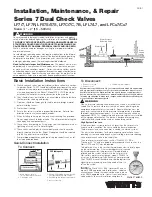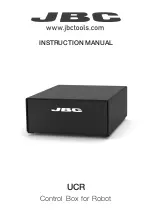
CAN Communication
General Information
EPOS4 Communication Guide
CCMC | 2019-11 | rel8759
3-21
3
CAN COMMUNICATION
3.1
General Information
maxon EPOS4 drives’ CAN interface follows the CiA CANopen specifications…
•
CiA 301 V4.2: CANopen application layer and communication profile (
[2])
corresponds with the international standard EN 5325-4; Industrial communications subsystem
based on ISO 11898 (CAN) (
•
CiA 305 V3.0: CANopen Layer setting services (LSS) and protocols (
•
CiA 306 V1.3: CANopen Electronic device description (
[4])
•
CiA 402 V4.0: CANopen drives and motion control device profile (
[5])
corresponds with international standard IEC 61800-7 Ed 2.0; Generic interface and use of profiles
for power drive systems – profile type 1(
[10])
3.1.1
Documentation
For further information on CAN/CANopen as well as respective specifications listed references in
“1.4 Sources for additional Information” on page 1-5.
3.1.2
Notations, Abbreviations and Terms used
Table 3-5
CAN communication – Notations
Notation
Description
Format
nnnnb
Numbers followed by “b”.
binary
nnnnh
Numbers followed by “h”.
hexadecimal
nnnn
All other numbers.
decimal
Abbreviation
Description
CAN
CAN Application Layer
CMS
CAN Message Specification
COB
Communication Object (CAN Message) – a unit of transportation in a CAN message
network. Data must be sent across a network inside a COB.
COB-ID
COB Identifier – identifies a COB uniquely in a network and determines the priority
of that COB in the MAC sublayer
EDS
Electronic Data Sheet – used by CAN network configuration tools, e.g. PLC's
system managers
ID
Identifier – the name by which a CAN device is addressed
LSS
Layer setting services
MAC
Medium Access Control – one of the sublayers of the Data Link Layer in the CAN
Reference Model. Controls the medium permitted to send a message.
OD
Object Dictionary – the full set of objects supported by the node. Represents the
interface between application and communication (
Continued on next page.
















































